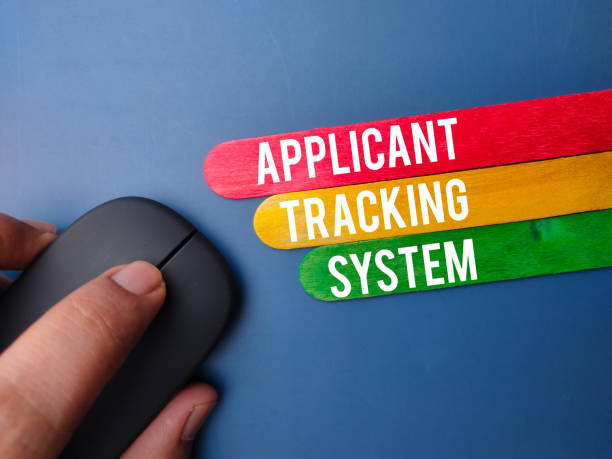
An applicant tracking system (ATS) is a piece of software businesses use to manage human resources management as well as recruitment and hiring. A range of features is accessible with different candidate tracking systems, but they are all specifically designed to assist hiring firms in managing and tracking a vast number of candidates.
Online job seekers are seeking solutions after filling out a multitude of applications. Employers’ application collection software can stand between applicants and a corporate recruiter and an interview. Candidates have a tough time finding their resumes in the hands of hiring managers when they use these systems for tracking applicants.
Systems for tracking applicants are utilized to monitor applicants.
In order to aid with the process of hiring and recruiting companies to employ application tracking systems. ATS provides a distinct variety of features, but they’re utilized to organize, collect, and categorize applications from hiring firms.
Employers work through an applicant monitoring system (ATS) if job seekers submit resumes and applications online.
Systems for tracking applicants: Why do businesses employ these systems?
It’s fairly easy for applicants to apply for jobs on the internet, which poses a problem for hiring firms. Jobs can receive thousands of applicants, a lot of whom come from people who aren’t qualified and think, “it’s worth a shot.” Instead of having to sort through endless resumes or overflowing email inboxes, hiring managers and recruiters utilize application tracking systems to keep organized and efficient. Particularly for large companies that require multiple posts at the same time, this method could make a huge amount of impact.
ATS offers features such as CRM-like tools to improve the hiring process, communicate with applicants, job advertisement distribution, and evidence of compliance with the government, for things such as things like the Equal Employment Opportunity Commission.
What are the issues with the applicant tracking systems used by job seekers?
Integrating search, filtering, and ranking capabilities into an applicant profile system allows recruiters to pull the relevant information from a resume in a way that is automatic. To identify quickly the best candidates, we need to immediately eliminate those who are unqualified, making the candidate selection process smaller and getting rid of any candidate who is not qualified.
Candidates should be aware that the majority of applicant tracking systems aren’t sophisticated and are unable to search and filter applicants with accuracy. Since their resumes are formatted problems or don’t contain the appropriate search terms, some highly qualified candidates are not properly removed from the pool of applicants.
Many hiring professionals have limited resources and time, so this is a must-have trade-off. Optimizing your resume to be able to track applicants is crucial to stand out.
The ability to track applicant data is utilized by employers for various reasons.
The most reputable employers take on many positions at once and get hundreds of resumes in response to each job opening. A lot of them are not qualified and have decided “it was worth a shot” since applying online is now easier than ever before.
These resumes are saved within an applicant tracking software which assists the hiring manager and the recruiter to be organized and also be in compliance with EEOC regulations. In theory, these systems can save time because they are able to display and highlight the top candidates automatically. But, demos ats does help to hire managers to reduce their applicants; however, the best candidates fall through the cracks.
Applications to display
Although some recruiters look at every application they receive via an applicant-tracking system, others do not. Most employers look at applicants’ previous work highlights, titles, and even employers. In just a few seconds, a learner can determine whether or not they want to know more. It is important to let others know what your best abilities and achievements are.
Rankings created automatically
Your resume will automatically be compared with the job description on various application tracking software. Taleo refers to this feature as “Req Rank,” which sorts applicants according to the degree to which their resumes line up with job descriptions.
Keywords used in searches
One of the most popular methods that recruiters use to sort resumes in candidate tracking software is by looking for specific skills and titles.
If a potential employer is looking to hire an administrative assistant in the middle of hundreds of resumes their initial step is to look in the search engine for “Administrative Assistant.” This will identify applicants with previous experience in the same job. You won’t be able to be hired when your resume doesn’t include the exact phrase applicant tracking system .
Multiple terms are possible in an online search. For instance, they could be conducting a search that incorporates the title and other skills that are relevant to the job.
In the context of the systems for tracking applicants, it is important to format your resume properly.
Some recruiters might not be able to view your resume if you send the resume to an applicant tracking program. To ensure that your resume is easy to search, some ATS analyze the document to create the form of a digital profile. For job seekers, this can be an issue that is very serious issue.
There are a variety of ATS parsing algorithms that are obsolete and ineffective, which results in incomplete or incorrect resume data. If this happens, crucial keywords or other details could be missing. Consider your most valuable accomplishments slipping by your fingertips, applicant tracking system!






